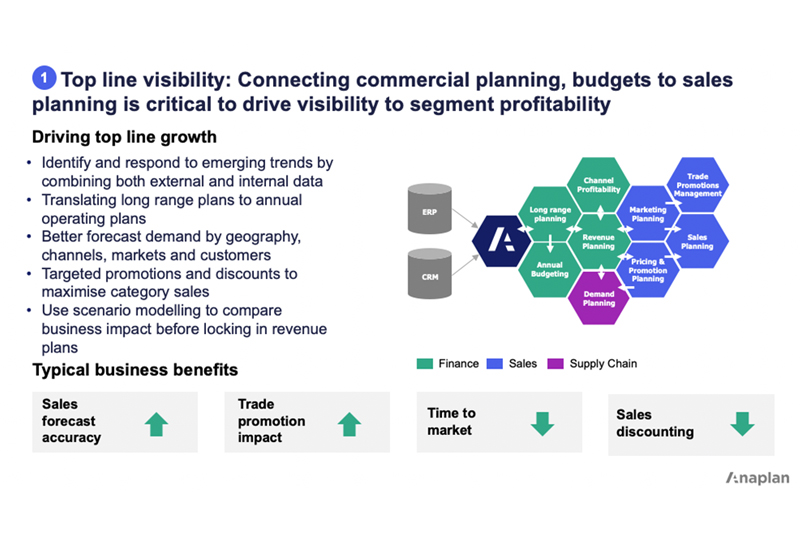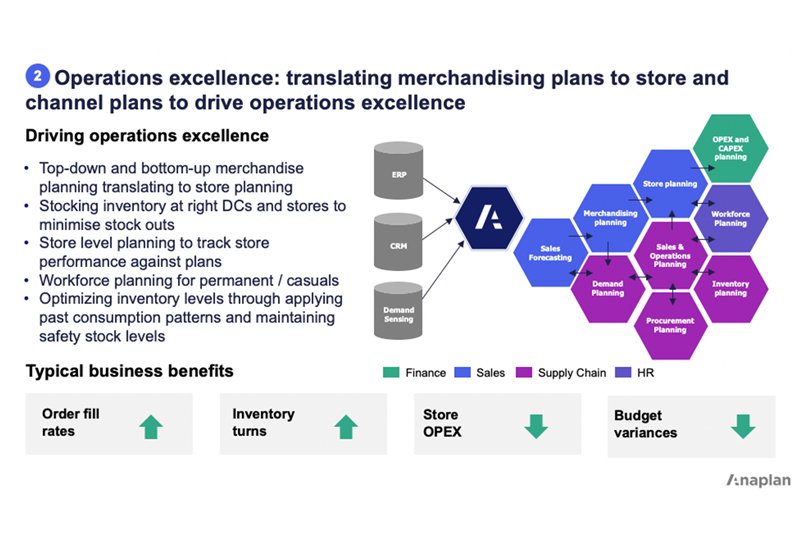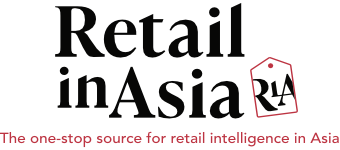As part of the Retail in Asia webinar series to address industry issues and trends, on 10th March we hosted a webinar in partnership with Anaplan dedicated to optimising the retail value chain through integrated planning.
SEE ALSO: A wrap up of Luxury Symposium 2022: All eyes on China
With the increasing complexity of omnichannel strategies, continued supply chain disruptions and shifting consumer behaviours, operational and fulfilment capabilities are struggling to keep up. Companies that thrived during the pandemic were the ones who were quick to adjust.
Together with representatives from Anaplan, McKinsey and a luxury group CIO expert, we decrypted how integrated planning can optimise the retail value chain. Here are the key takeaways from the webinar:
Major trends shaping the retail landscape today

- The pandemic accelerated the adoption of e-commerce. Omnichannel is here to stay and e-commerce penetration is expected to increase significantly in the future. Businesses must have a clear omnichannel strategy and plan fulfilment operations accordingly.
- Omnichannel personalisation has become table stakes. From marketing to the consumer offline journey, retailers need to make personalisation a top priority to increase customer acquisition and retention and boost satisfaction and engagement.
- Improving delivery speeds provides a distinct competitive advantage as customers are expecting ever-faster delivery. According to McKinsey’s data, more than 75 percent of speciality retail supply chain leaders have made two-day delivery a priority, and 42 percent hope to offer same-day delivery by 2022 in North America.
- Sustainability is key in a business strategy as consumers are aligning their purchasing power with businesses’ societal commitments.
- Talent strategies need to be recalibrated and kept flexible to adapt to changes in demand. Temporary employment is expected to grow to supplement missing or changing skill sets in organisations.
- Businesses must pursue an ecosystem friendly strategy and work with partners to accelerate capabilities
- Agility has become a growth driver. Transforming the business processes and custom journey in a more transformational way enables companies to stay ahead of headwinds and competition.
In the new normal, retailers have to double down on consumer-driven commerce while at the same time investing for growth. Few if any retailers will be able to address all of these imperatives at scale and at the same time – the overall cost and complexity will be too high. Therefore, the first step will be to set priorities.
Driving enterprise value, agility and resilience with connecting retail value chains

In the new normal where agility is key, traditional ways of planning with spreadsheets and monthly meetings are no longer applicable. Retail companies must leverage technology to achieve organisational agility and optimise their value chain. With connected planning, companies use planning analytics to create more accurate forecasts and make resource decisions quickly and pragmatically. From demand volatility to stock level, supplier diversity and store productivity, the Anaplan platform connects data and generates different scenarios for richer forecasting capabilities. Businesses can see the impact of their decisions on the P&L from both a regional and a store-level and make informed decisions accordingly.
By leveraging the Anaplan platform, businesses can drive top line growth by better predicting demand. Some of the key benefits are better sales forecast accuracy, better trade promotion impact, faster time to market, and limited sales discounts. As a holistic solution, Anaplan also drives operational excellence and enables businesses to analyse how their fulfilment operations are coping with the demand. Businesses can then optimise inventory turns, plan workforce better, lower store OPEX, and decrease budget variances.

Integrated planning for the luxury industry
Vincent Queru, CIO expert in luxury brands and former LVMH joined our panel discussion to share his experience as he implemented the Anaplan solution when he was working for Berluti. Berluti chose Anaplan to improve their sales forecast before the pandemic. The implementation of the Anaplan solution proved to be even more relevant when Covid-19 started. With store closures happening at different times across the globe and the disruptions in logistics and supply chain caused by the pandemic, Berluti was able to quickly reallocate the right products in the markets or channels where they were still selling to drive growth in these uncertain times.
For retail companies that operate in different markets and have thousands of SKUs as well as multiple suppliers , implementing a connected planning solution is key to be flexible and agile. Having one single platform used by different functions across the organisation unlocks business growth and ultimately drives customer satisfaction.
In addition to flexibility and financial optimisation, Vincent Queru said that the Anaplan solution also allows for more collaboration across the different units of an organisation. While before the implementation, meetings were based on forecasts developed on spreadsheets by specific teams, the different simulations and scenarios that the Anaplan solution could generate in a few minutes brought more interaction during the meetings and led to better and quicker decision making.
While Berluti was the first brand within the LVMH group to implement the Anaplan solution, Louis Vuitton followed quickly after. Vincent Queru said that businesses which aim to implement such a solution should start small and identify one pain point within the organisation in order to build a proof of concept before scaling and adopting the solution across the whole organisation.
While the whole industry aspires to be more agile and flexible, the main challenge remains internal. Connected planning should no longer be seen as a cost but as an enabler for business growth. In addition, companies need to break the silos and enable more collaboration between the different units to bring the business to the next level.
For more information about how integrated planning can work for your organisation, watch the webinar here.




